The construction of a house gate is not only about aesthetics but also has a significant impact on the family’s fortune. Today, let’s explore how to build a house gate that follows Feng Shui principles and attracts wealth and prosperity for the homeowners.
1 What is a House Gate According to Feng Shui?
A house gate is considered to be built according to Feng Shui principles when it meets the following conditions:
Size of the House Gate
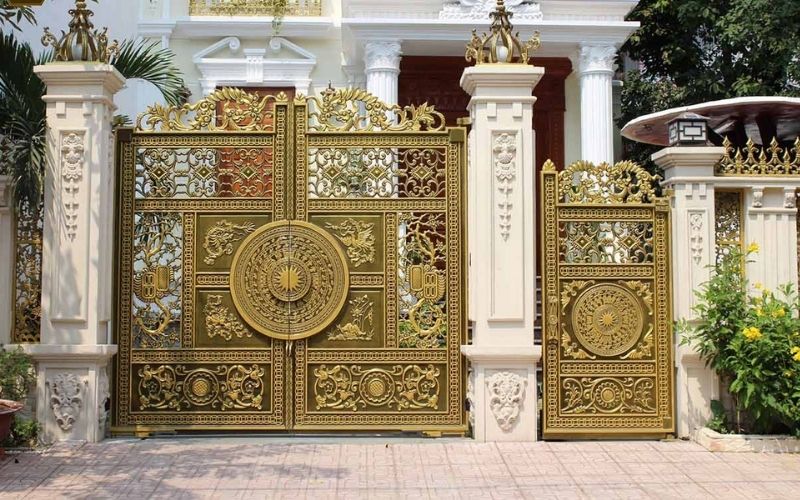 Feng Shui-compliant house gate size
Feng Shui-compliant house gate size
According to Feng Shui principles, the height of the house gate should be based on the Lu Ban ruler, a traditional measuring tool used in construction (Yang Zhai) and tomb design (Yin Zhai). This ruler helps determine the appropriate dimensions for the family’s wealth and destiny path.
Typically, the ideal length for a house gate, whether for a residence, an office, or a company, is an odd number (a positive number), while the ideal width is an even number (a negative number). Here are some specific examples:
- House with one main gate: 81cm x 212cm.
- House with two gates (for a house with a garden or a side gate to access the garden or garage without passing through the living room): 138cm x 216.5cm.
Direction of the House Gate
To attract wealth and prosperity for the homeowners, it is essential to consider the direction of the house gate in relation to the homeowner’s life path, also known as their “ming.” Here are some guidelines:
Homeowners with a Fire (“Hỏa”) Ming
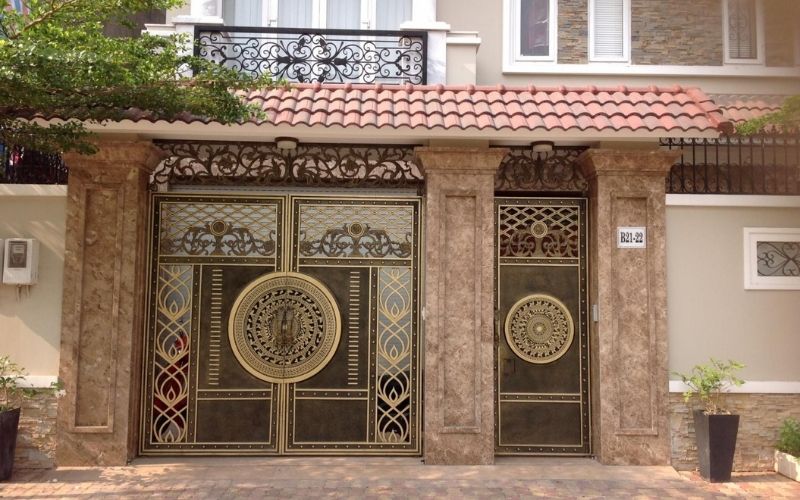 House gate direction for homeowners with a Fire ming
House gate direction for homeowners with a Fire ming
Homeowners with a Fire ming should avoid building their gate facing North, as this direction represents the Water element, which conflicts with the Fire ming and may bring disadvantages to the family. Additionally, the gate should feature sharp angles, intersecting lines, and be painted in shades of brown and red, with tiled roofing.
Homeowners with a Metal (“Kim”) Ming
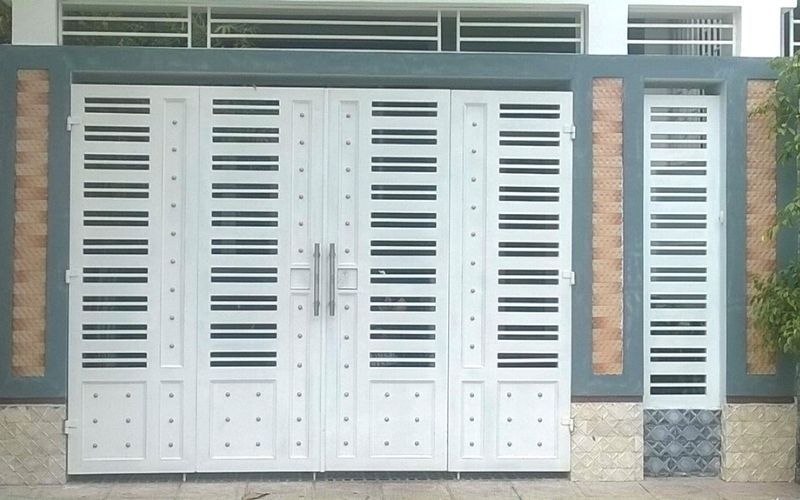 House gate direction for homeowners with a Metal ming
House gate direction for homeowners with a Metal ming
For those with a Metal ming, it is best to avoid building the gate facing South, as this direction represents the Fire element, which clashes with Metal and may bring challenges to the family. Instead, opt for a curved, round design with silver or bright white colors and metallic materials.
Homeowners with a Water (“Thủy”) Ming
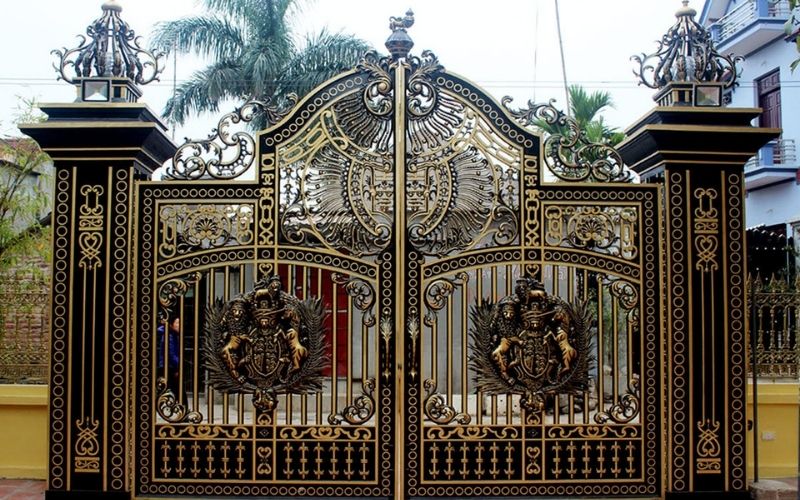 House gate direction for homeowners with a Water ming
House gate direction for homeowners with a Water ming
Homeowners with a Water ming should avoid building their gate facing Southwest or Northeast, as these directions represent the Earth element, which conflicts with Water and may bring difficulties. The primary colors of the gate should be black and dark blue, with soft, flowing patterns.
Homeowners with a Wood (“Mộc”) Ming
 House gate direction for homeowners with a Wood ming
House gate direction for homeowners with a Wood ming
For those with a Wood ming, avoid building the gate facing West or Northwest, as these directions represent the Metal element, which clashes with Wood and may bring challenges to the homeowner’s life. Consider using iron or wood painted in shades of green with parallel bars for the gate design.
Homeowners with an Earth (“Thổ”) Ming
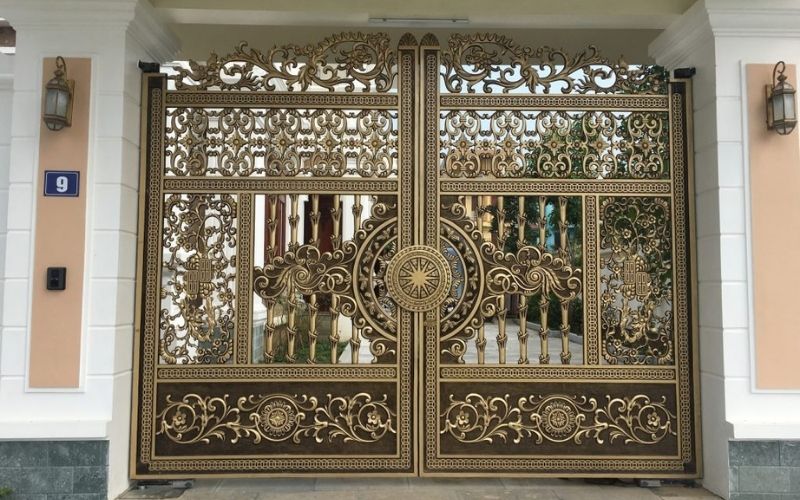 House gate direction for homeowners with an Earth ming
House gate direction for homeowners with an Earth ming
Homeowners with an Earth ming should avoid building their gate facing East or Southeast, as these directions represent the Wood element, which conflicts with Earth and may bring disadvantages. Consider using earthy colors like yellow, brown, or beige for the gate.
2 Feng Shui Considerations for the Main Gate
The main gate is a place that family members frequently pass through, and it has a significant influence on their wealth and family life. Here are some essential Feng Shui considerations for the main gate:
Opening Direction of the Main Gate
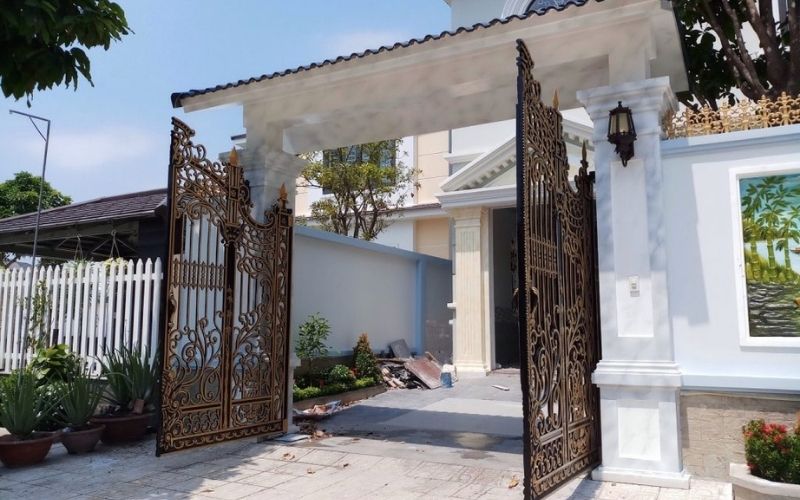 The main gate should open outward
The main gate should open outward
The main gate should open outward to allow positive energy and wealth to flow into the house and prevent the escape of money. This direction also brings peace and prosperity to the homeowners.
If your main gate opens inward, you can correct this by hanging a mirror on the wall to create the illusion of a wider space and prevent wealth from flowing out.
Gate Size in Relation to its Direction
 Gate size should be proportional to its direction
Gate size should be proportional to its direction
If you must build your gate facing an unfavorable direction, it is advisable to construct a smaller gate to minimize the negative impact. Conversely, if your gate faces a favorable direction, consider building a larger gate to attract more wealth and prosperity.
Path Leading to the Main Gate
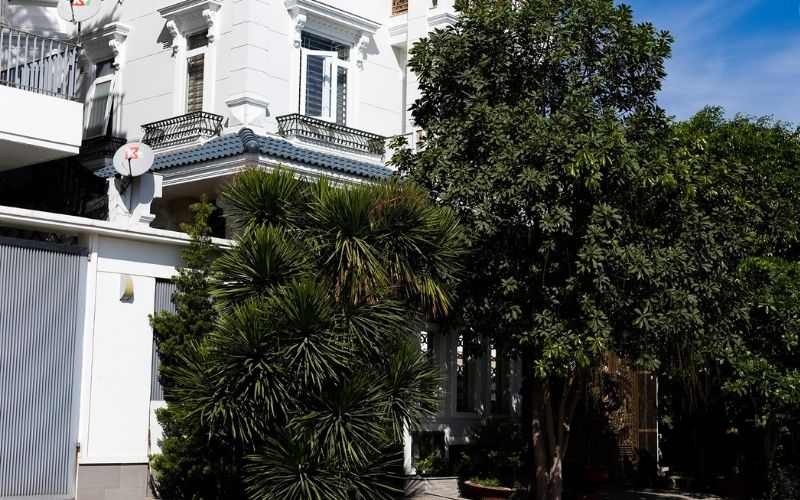 Keep the path to the main gate unobstructed
Keep the path to the main gate unobstructed
The path leading to the main gate should be proportional to the size of the house, and large objects or decorations should not be placed in front of the gate to ensure smooth movement and allow positive energy to flow into the house easily. Additionally, avoid narrow and steep stairs at the main gate, as this may cause difficulty in retaining wealth.
Appropriate Decorations
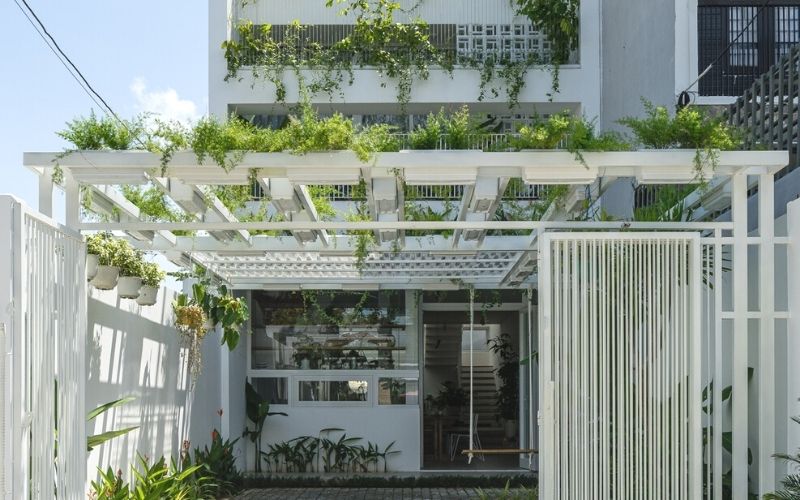 Choose aesthetically pleasing decorations for the main gate
Choose aesthetically pleasing decorations for the main gate
As mentioned earlier, avoid placing large or aesthetically unpleasing objects like bricks, stones, or dirty items near the main gate, as they may obstruct the flow of positive energy. Instead, opt for decorative plants like ornamental banana trees or bamboo to attract good luck and fortune.
Curving Path from the Main Gate to the House
 Create a curving path from the main gate to the house
Create a curving path from the main gate to the house
According to the Feng Shui principle, “Trực lai trực khứ tổn nhân đinh,” it is advisable to build a curving path from the main gate to the house to avoid direct and strong flows of negative energy that may bring challenges to the family’s life.
3 Taboos to Avoid When Building a House Gate
 Taboos to avoid when building a house gate
Taboos to avoid when building a house gate
In addition to the guidelines mentioned above, here are some taboos to keep in mind when constructing your house gate to avoid losing wealth and prosperity:
For further reading: 15 Feng Shui tips to attract wealth and prosperity into your home using various decorative items.
Now you know how to build a house gate according to Feng Shui principles to attract wealth and prosperity for the homeowners! We hope that this article has provided you with valuable insights to enhance your family’s career and prosperity.


































